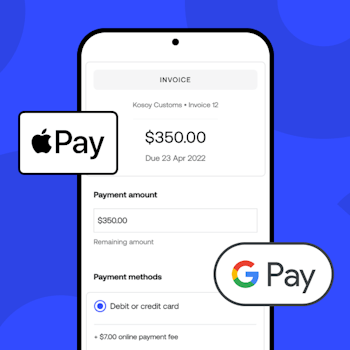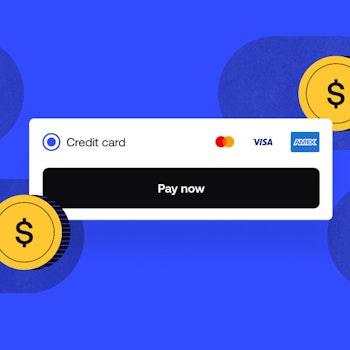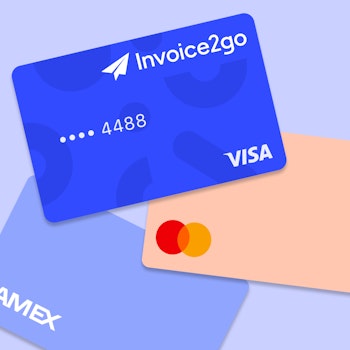
How to raise your prices without losing customers – 6 expert strategies
As everyone grapples with supply chain issues, labor shortages, and inflation, the cost of doing business is going through the roof. In January, the Bureau of Labor Statistics released its Consumer Price Index, showing that by the end of 2021, inflation had risen to a 10-year high. Though the average was 4.7% for the year, the index rose steadily through the year, with massive rises seen in energy and fuel costs.
While we expect prices to rise, there’s no question we’re all feeling a pretty big pinch lately, and it’s unlikely to settle down anytime soon.
All small businesses owners—and that includes you, freelancers—need to figure out how to offset these increases to protect your margins, but it’s a delicate balance. You’re not the only one who’s affected by inflation, so you’re walking a fine line. There are ways to cut costs, but there’s only so much you can do. In the end, you’ll need to decide whether pass any increases on to your customers.
Using a data-based approach is critical here, as the act of raising your prices can’t be arbitrary—and now, more than ever, it’s necessary. You’re doing what you must do to maintain profitability. However, there is a way to raise prices without alienating customers.
Proactive communication is critical to maintaining customer satisfaction, as is framing your rate increases in the context of your value proposition.
Bottom line, you will get a few negative responses, and you may lose a few along the way. But here’s a thought; if you raise your prices and get no pushback whatsoever, maybe your prices are still too low. Conversely, if a price increase is a dealbreaker for one or two customers and you can’t be profitable otherwise, perhaps you need to start looking at rebranding to appeal to a higher-value audience.
How to raise prices without losing customers
If your margin is shrinking and you’re considering raising your prices, these six tips will help you avoid unhappy customers and take the bite out of your profits.
1. Reinforce the business case with hard data
There will always be a few customers that push back when you raise prices. Mostly, it’s about not wanting to pay more, but if you present them with data to back up your decision, it will be hard to mount an argument against it.
Raw materials, labor, and shipping are just a few of the costs that affect your bottom line. Payroll costs have increased, as has the cost of providing health benefits.
Procurement has become more challenging too, and many companies have had to turn to alternative sources to obtain certain types of equipment, raw materials, and expendables.
Restaurants and food producers, for example, have experienced significant increases in staple ingredients and shortages of items they use every day. Plus, the labor crisis has forced many to raise wages and offer more attractive benefits so that they could attract and retain staff (a situation that extends to just about every industry). Profitability in hospitality is meager at the best of times, so it’s surprising that prices have not risen more than they have. However, you occasionally see a service charge, packaging, or PPE surtax added to bills, sometimes in the range of 10% or more.
We could go on, but you get the picture.
You don’t have to show customers your ledger, but you could create a chart that shows your significant line items and how much your base costs have increased, represented by a percentage. Make it brief, colorful, and concise, so it presents your case at a glance. Provide an overview of your repricing strategy and a statement regarding how long you commit to these prices. For example, you can provide a written guarantee that your rates will hold for the next year (or more).
2. Brainstorm alternatives to raising prices
If you offer packaged goods, changing the size of the package might help you keep pricing steady without changing the offer too much. For example, if you sell items by the pound, you could reduce the size of the package and keep it the same price. You’d need to let your customers know in advance, so there are no surprises, but it’s an option.
Changing your packaging might be another way to offset costs. Today’s consumers prefer less packaging, so you could frame it in a positive way and not have to mount a defense at all.
Of course, many businesses today, especially those based on freelance services, don’t have packaging, per se. Alternately, you might split your offerings into tiers to allow customers to level up or down based on their budget. Apply the concept of “good/better/best” to your services if it makes sense.
Think about what you could bundle together to create added value. You might also consider adding a VIP or loyalty program for regular customers. This idea offsets the price increase by providing them with something extra (or free) based on their spending or whatever benchmark makes sense to your business model.
Switching to a monthly subscription model is another idea as it will shield the price increase and ensure ongoing monthly income.
Here are a few more ideas:
- If you offer service by the hour, you might break up the hour into two 30-minute sessions.
- Seek out new suppliers or purchase raw materials in bulk to cut costs.
- Form a buyer’s group with other merchants that offer similar items or services. You’ll increase your buying power, and you’ll all benefit from bulk pricing.
- See where you can reduce costs in your organization. For example, perhaps you pay an outside contractor to do things you could easily do yourself.
- Take a hard look at your expenses and subscriptions to see what you can eliminate, cancel, or unsubscribe from. Switching your physical magazine subscriptions for the digital version will often save you a few bucks—and it all adds up!
3. Make it a habit to raise prices at regular intervals
If your rates have not increased in a long time, perhaps it’s time to implement regular reviews of your pricing structure. For the most part, your customers will understand. To ensure you’re in the zone, look at your costs and margins regularly, either semi-annually or annually. When you make this a regular practice, you’ll have a better grip on your cost of doing business and will be able to adjust quickly.
Some service providers score their customers based on performance, payment history, returns, and other attributes that contribute to the cost of serving them.
So, for instance, if you have a regular customer that always pays late and takes up a lot of your time chasing them down for money, you might want to start thinking about adding a price rider to their contract. This strategy assumes regular price increases at pre-determined intervals and rewards customers for good behavior by reducing or eliminating the charge following a period of on-time payments. It may not offset your hard costs, but it will certainly reduce the amount of time you spend dealing with the issue—time you could channel into new business or other high-value tasks.
4. Communicate clearly and give advance notice
Customers respond well to transparency. If you intend to raise your rates, it’s vital to be clear with them, so they don’t feel like they’ve been blindsided. These times are challenging for everyone—not just you—so consider who is on the receiving end and tailor your message accordingly.
Your commercial channels are less likely to respond to your price increase adversely. Customers, however, might be navigating their own challenges. Be sure to word your communications carefully and be empathetic. Offer alternatives (see #2 above) if possible and be open to feedback. When you display a desire to work with them towards a compromise, you’ll make an emotional connection and gain a lot of goodwill.
For significant price increases in a B2B scenario, you might even want to get on the phone to speak to your most important buyers directly. Your price increases could well impact their costs, so be acutely aware of the potential fallout. A wine wholesaler raising prices by a dollar a bottle will affect the retail price to the consumer, which might limit their capacity to buy (and sell) the product.
Look at every angle. Know that while you might lose a few customers along the way, the ones that stay will appreciate the care and time you take to recognize and address their situation. Good communication, after all, is the foundation of all strong relationships.
5. Frame your price increase positively and in terms of value
With prices for so many things skyrocketing, it would be easy for a customer to call “cash grab” unless you frame your price increase in a positive way. There are several ways to accomplish this. To communicate this adequately, you first need to think about what a price increase will mean to you.
Will higher prices mean you can provide better service? Will it allow you to improve the quality of your product or service or optimize it in a way that adds value to the customer? In many cases, the answer here is “no.” A price increase after a long period of no change usually means that you’ll be able to continue offering the same great product (or service) for the same price with no compromise. On the other hand, if you keep the price as is, you might need to value engineer some aspect of it to make it viable.
When you communicate your plans to your customers, here are a couple of things you can say:
- This price increase reinforces our commitment to providing our customers with the best possible products and services.
- Be assured that we have made every effort to minimize this increase and continue to honor current price structures until [insert date].
6. Time your price increase strategically
We talked a little about periodic increases, but strategy is everything here. Consistency fosters trust, so if you increase prices at set intervals, say yearly, or every two years, your customers will come to expect it.
When you take on new customers, approach it like you would a lease. You can even write it into your contracts or put verbiage on your website that pricing is valid for a specific period of time or give it an end date. Hotels often do this, if indeed they post rates at all. Rates are set for the year based on costs and are reassessed during the slow season in January and February, which brings us to another strategic area—the timing of the rate increase itself.
For example, it’s preferable to put new rates into effect before your busy season. It’s also advisable to avoid the holiday season as a rate increase then might catch people off-guard.
Similarly, suppose you’re experiencing a period of low customer satisfaction. In that case, that’s generally not the best time to spring significant changes as it might be the slight push some people need to cut ties completely.
Like most other business practices, you need to think about your customer and their general sentiment before making any decisions. Any action you take should be in the spirit of partnership, meaning there needs to be mutual understanding and respect.
Here are a few tips to help you get your timing right:
- Be sure you give your customers plenty of advance notice so they can plan accordingly.
- Be specific about the products and services that will increase in price.
- Explain why the price increase is necessary and how it will help you maintain quality.
- Encourage customers to take advantage of legacy pricing while it lasts.
- Be clear about your timing; be specific about the upcoming changes and when the new pricing goes into effect.
Last but not least, always solicit feedback. Invite customers to reach out with questions or concerns. Any conversation you have is an opportunity to strengthen your relationship, build bridges, and add value to what you already do so well.
Join our small business community today for more tips, advice, and stories from the front lines.
Related Articles

How to accept credit card payments on Invoice2go in 3 simple steps

Accept payments online via Apple Pay and Google Pay

Must-not-miss write-offs as you wrap up 2022 year-end finances

5 ways accepting credit and debit card payments helps your business stay resilient

4 easy ways to increase cash flow today

What is Small Business Saturday and why is it important?
The features and surprising benefits of a well-designed packing slip
